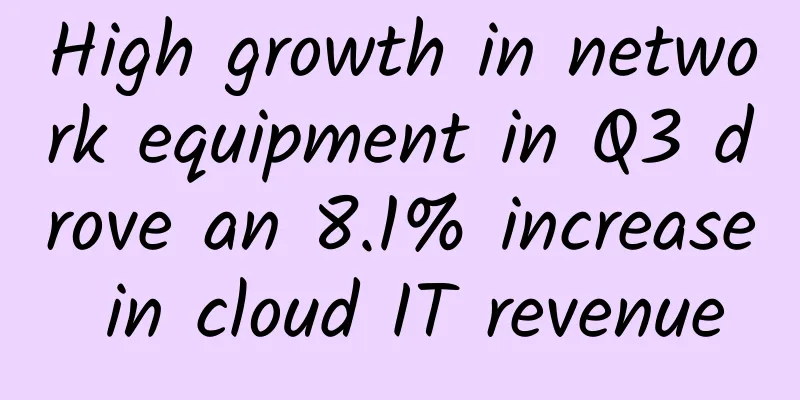What are the risks encountered when migrating a data center and how to deal with them?

|
When an enterprise develops to a certain extent, or the previous computer room can no longer meet the needs of the current data center, the enterprise will migrate the data center. Data center migration sounds simple, but when you really do it, you will find that data center migration is a complex project. Moreover, it is even more difficult to migrate a data center safely because there will be some risks when migrating a data center. These risks cannot be avoided, but we can take some measures to reduce the risks of data center migration. So what risks will we encounter when migrating a data center? What measures should we take to avoid these risks? Let's analyze several problems and risks related to managing a data center.
1. Data Migration Migrating application data from one location to another can be one of the most complex aspects of a data center migration project. A simple approach is to perform a tape- or disk-based backup and perform a restore; however, like a lift-and-shift migration, backup and restore provides limited capabilities for restoring service in a timely manner. Additionally, backup and restore is not the ideal method for data migration—it is more suitable for disaster recovery scenarios where data recovery options are limited. 2. Hardware Migration There are two common strategies for migrating physical servers: one is called a "lift" and the other is called data replication. In a lift strategy, the hardware is put on a moving truck and then installed in a new data center. The system is backed up before moving to the new location, but this strategy carries some risks. One of the biggest risks is that the physical server may be damaged during transportation; damage during transportation will render the backup useless. Another challenge is that the two data centers are too far apart, making this approach unrealistic and unable to guarantee service availability within an acceptable period of time. The second strategy is to migrate data over a leased line. Leased lines bring two sub-swing hardware options. One option is to perform a physical-to-physical (P2P) migration. P2P migration requires the purchase of similar hardware so that the applications and hardware of the original data center can be migrated over while ensuring the shortest downtime. 3. Availability of Services The primary purpose of a data center is to host and run applications that provide services to the business. Whenever you consider migrating from one data center to another, you must first consider the availability of the underlying services. These services include infrastructure applications such as Active Directory and customer-facing applications such as SAP. When services are moved from one data center to another, you must develop a strategy that takes into account when specific services are moved and the dependencies of applications on each other. A common approach to ensuring service availability is to create migration groups and group interdependent applications into the same group. For services that support most enterprise applications, such as Active Directory and DNS, a common approach is to extend these core services across data centers. Services remain in both data centers until the migration is complete. Migrating a data center is an important and complex project for an enterprise. The successful migration of a data center is also very important for an enterprise. Therefore, for some security risks encountered during the migration process, the enterprise must take corresponding measures in a timely manner for different risks. |
<<: World Cup employees are distracted and use enterprise-level routing to control
>>: WiFi beginners guide: 4 things you need to know
Recommend
Speed up 5G trials! The three major operators are all full of enthusiasm
The third-phase specification release conference ...
Behind the 13 consecutive fines: When will the operators’ “low-price bidding” stop?
According to people familiar with the matter, a c...
Sharktech: Los Angeles high-defense server 1Gbps unlimited traffic starting at $129/month, optional 10Gbps unlimited traffic
Sharktech is a long-established foreign hosting c...
CloudSilk: 160 yuan/year-512MB/10G SSD/[email protected]/San Jose 4837/optional AS9929
CloudSilk is a domestic hosting company establish...
Huawei's Smart City Nervous System shines at CIIE
From August 21st to 23rd, the 2018 (4th) China Sm...
20 lines of Python code to achieve encrypted communication
1. Introduction The Internet is full of eavesdrop...
Four factors driving 100Gbps network upgrades
According to Crehan Research, 100Gbps and 25Gbps ...
[Black Friday] HawkHost: 35% off on virtual hosts, 30% off on reseller hosts/cloud servers, data centers in Hong Kong/Los Angeles, etc.
HawkHost basically shares the discount once a yea...
From "Integration" to "Huawei Inside", Huawei builds a new ecosystem in the intelligent era
[51CTO.com original article] [Fuzhou, China, Marc...
5G speed may be slower than 4G?
In 2020, as the first year of 5G, 5G network cons...
IEEE technical white paper officially released, lossless network research enters a new stage
Recently, the "IEEE 802 Nendica Report: The ...
5G accelerates the process of 2G/3G network withdrawal in my country
Recently, British mobile operator Three UK has de...
Powered by EMUI 9.1, Huawei Enjoy 10S brings users a brand new smart experience
In the era of information explosion, consumers ar...
Cisco, the hero behind the scenes who helps turn good thoughts into good deeds
People often have good intentions in their hearts...
80VPS: Hong Kong/Korea/Japan VPS annual payment starts from 299 yuan, US cluster server 8*/27 total 232IP monthly payment starts from 750 yuan
80VPS has launched a mid-year promotion, offering...









